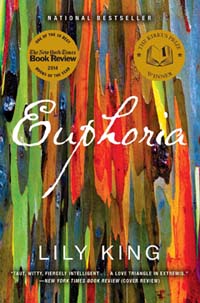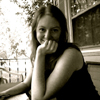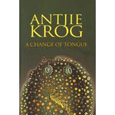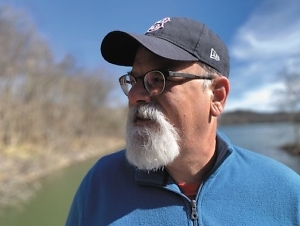Observations from the Field
Euphoria author Lily King discusses the risks involved in translating real-life anthropologists into fictional characters
In an early chapter of Lily King’s acclaimed novel Euphoria, British anthropologist Andrew Bankson recounts his first conversations with Nell Stone, an American colleague whose controversial reputation precedes her and whose inquisitive mind quickly attracts him: “We’re always, in everything we do in this world, she said, limited by subjectivity. But our perspective can have enormous wingspan, if we give it the freedom to unfurl.”
 Spun from incidents in the life of revered anthropologist Margaret Mead, Euphoria takes place in 1930s New Guinea, where anthropologists Nell and Fen, who are married to each other, have been observing numerous tribes in a search for career-defining discoveries. At a low ebb of health and cash, they encounter Bankson, whose influence will propel them all into a passionate and dangerous triangle. King pulls these three characters into tightly knotted conflict, powered by their intellectual ideas, boundary-stretching desires, and troubled pasts.
Spun from incidents in the life of revered anthropologist Margaret Mead, Euphoria takes place in 1930s New Guinea, where anthropologists Nell and Fen, who are married to each other, have been observing numerous tribes in a search for career-defining discoveries. At a low ebb of health and cash, they encounter Bankson, whose influence will propel them all into a passionate and dangerous triangle. King pulls these three characters into tightly knotted conflict, powered by their intellectual ideas, boundary-stretching desires, and troubled pasts.
Since its initial release last year, Euphoria has earned the inaugural Kirkus Award for Fiction and the New England Book Award, and it was named a finalist for the National Book Critics Circle Award. On tour to promote the book’s paperback release, King recently answered questions from Chapter 16 via email:
Chapter 16: Nell Stone is a deeply memorable character. How did you go about drawing the necessary distinctions between Nell and her real-life inspiration, Margaret Mead?
Lily King: When I first got the idea for the book, I did think I would try to stay as close as I could to what I could find out about Margaret Mead. I thought I would try to tell the story of these five months in her life. But as soon as I stopped researching and starting writing, I understood that I had to tell my own story, that I couldn’t write a real novel with those kinds of constraints, and that the personalities of the characters had to come from my imagination. As a result, they made very different choices than their real-life inspirations and moved further and further away from the true story that sparked the idea.
Chapter 16: Bankson makes an intriguing narrator, given that he’s spent decades reflecting on the passionate interlude he shared with Nell and Fen. How did you decide to pair his narration with Nell’s diaries?
King: It took me a long time to accept that Bankson was the narrator of this novel, that this was really his story. I knew it when I wrote Chapter 2 in his point of view, but I wrote several more drafts that told the story from several perspectives, until I finally gave up and gave in. Initially Nell’s journals were letters to Helen, her lover and colleague back home in New York. But in a later draft I decided that the relationship between Nell and Helen didn’t need so much rehashing as she tended to do in those letters, and that a journal would help me tell more about the Tam and Nell’s work with them there.
Chapter 16: These anthropologists sometimes question whether their field techniques, or simply their presence, may alter the customs and behavior they seek to understand. Do their relationships with each other suffer from the same phenomenon?
 King: I think one of the main things I ended up exploring in this book is how much an anthropologist’s personal life affects her work and vice versa. All you have to see through is your own lens, so it is inevitable that what you are experiencing influences what you observe. And what you observe and think about in your work gets plugged back into your personal life. Reading Margaret Mead’s letters made me aware of this, how interwoven her personal and professional lives were.
King: I think one of the main things I ended up exploring in this book is how much an anthropologist’s personal life affects her work and vice versa. All you have to see through is your own lens, so it is inevitable that what you are experiencing influences what you observe. And what you observe and think about in your work gets plugged back into your personal life. Reading Margaret Mead’s letters made me aware of this, how interwoven her personal and professional lives were.
Chapter 16: Euphoria is packed with tensions between theoretical knowledge and lived experience. When it comes to showing the consequences of theoretical inquiry, what advantages do fiction writers have over historians or scientists?
King: I think our best advantage is always storytelling. We wrap our ideas up in a narrative that, we hope, feels like an experience, feels visceral and emotional as well as intellectual and theoretical. And there is a huge difference for the reader between being told a series of facts and reading a scene in a novel in which facts emerge.
Chapter 16: Nell and Fen immerse themselves in studying the Tam and the Mumbanyo, both fictional tribes. As a contemporary writer from the West, what were your challenges—and, I’d imagine, trepidations—in creating fictional peoples?
King: I had many, many trepidations while writing this book, and certainly that was one of them. I had a real challenge on my hands because we were only going to see the indigenous people from the Westerners’ points of view, and somehow I needed to convey their full humanity even when the narrators were not always able to see it. I read a good bit about tribal life in the region, but learning about kinship and death rituals is a far cry from creating dialogue and revealing individual character.
Chapter 16: You’ve done extensive research into the ventures of Mead, Gregory Bateson, and other anthropologists of this period, when World Wars and colonization were throwing the world into greater flux. What were the aspects of their lives in the field that surprised you most?
King: I was truly surprised by their colonial attitudes. Mead and Fortune had 250 porters carrying their stuff up the Torricelli Mountains in 1931—at least a four-day climb. They would arrange for a cook boy, a shoot boy, a houseboy right off. Just those acts alone would affect your reception and role in the village, would skew your results even before you asked your first question. What I also found interesting was how emotional it all was. As a novelist I deal in emotions, but I think of scientists as being able to cut off extremes of feeling when necessary to get the job done. But the five months those three spent together on the Sepik River were driven by emotion.

Emily Choate holds an M.F.A. from Sarah Lawrence College. Her fiction is forthcoming from The Florida Review, Tupelo Quarterly, and The Double Dealer, and her nonfiction has appeared in Late Night Library, Yemassee, and elsewhere. She lives in Nashville, where she’s working on a novel.





